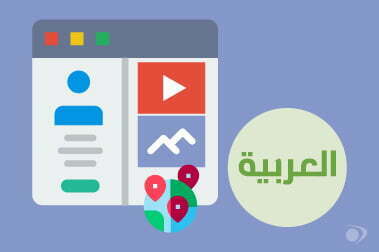Tips for Arabic Website Localization
Having an English-only website may not be enough anymore. If you’re looking to reach out to more customers by expanding into new and global markets, you need to consider translating and localizing your website into the native language(s) of your target audience.
Language is such an important factor in the way people search for and purchase products. According to Harvard business reviews:

- 72% of consumers spend most or all of their time on websites in their own language.
- 72% of consumers said they’d be more likely to buy a product with information in their own language.
- 56% of consumers said that the ability to obtain information in their own language was more important than price.
People generally go online first when searching for something, rather than going into a store and talking to a salesperson. So, having a globalized website is one of the most imperative ways to reach a global customer base, and it’s certainly one of the fastest and easiest ways. If you haven’t translated your website and taken culture into consideration, you could be missing out on a lot of global business.
Arabic Website Localization
If Arabic is one of the languages you want to target, here are some of the things that you need to think about before you begin an Arabic website translation project, given that Arabic is a complex, challenging language.
Review the Source Content
Ask your translation vendor to review the source content carefully for cultural considerations before you start the localization process. Many images, words or colors may not be appropriate for the Arabic-speaking users/markets. For example, most Arabs don’t eat pork, so showing pork or even a pig may not be appropriate. The last thing you want to do is to offend your audience when making a first impression.
Consider the Arabic Dialect
Use the terminology that’ll be suitable for your target audience. The Arabic language has many spoken dialects, but the formal and most appropriate written dialect is the Modern Standard Arabic (MSA), which is used in business, media and websites across Arabic countries. However, different terms of the Arabic language are used in different countries from the Gulf region and Egypt to Syria and Lebanon. Using the right terminology and Arabic linguists to address your audience will make a difference in marketing your brand.
Right-to-left (RTL) Capability
Since Arabic is a right-to-left (RTL) language, make sure your CMS is capable of handling RTL languages. If your CMS is not enabled to display an RTL language, your content will not appear correctly, which is going to cause confusion and appear very unprofessional.
In Summary
There’s no doubt that localizing your website, especially into languages that are widely spoken like Arabic, should become a must-do. Choosing the right translation partner to localize your website will make a huge difference when it comes to creating with the right workflow and following best practices to make sure your website gets found, seen and understood by your target audience.
